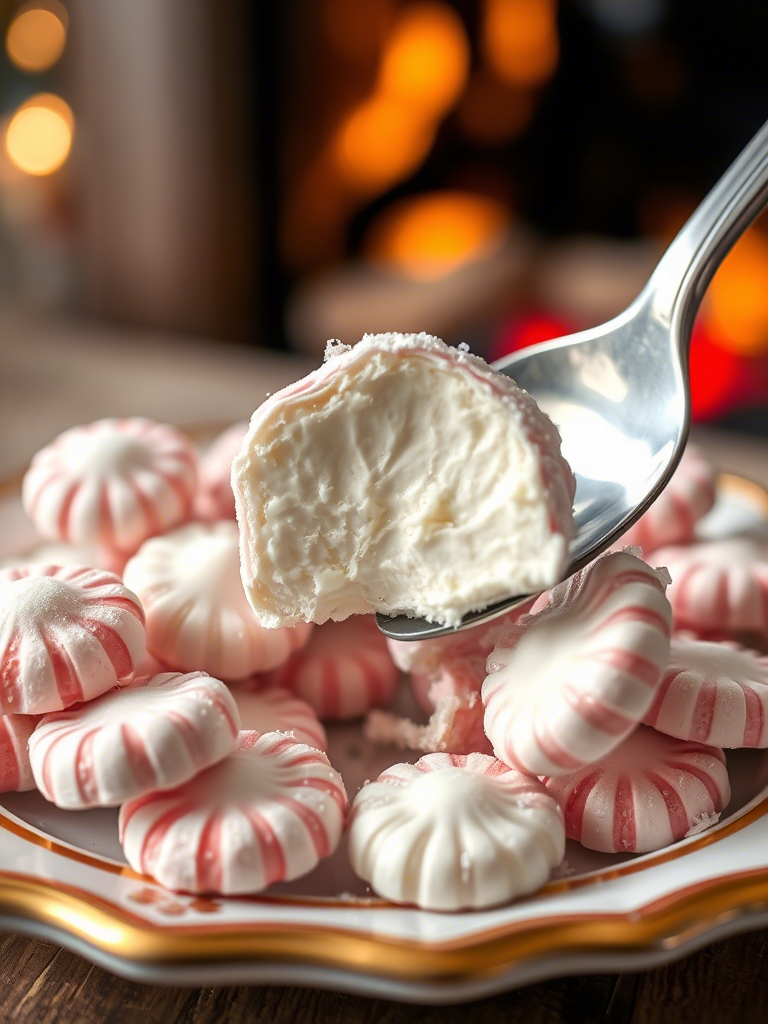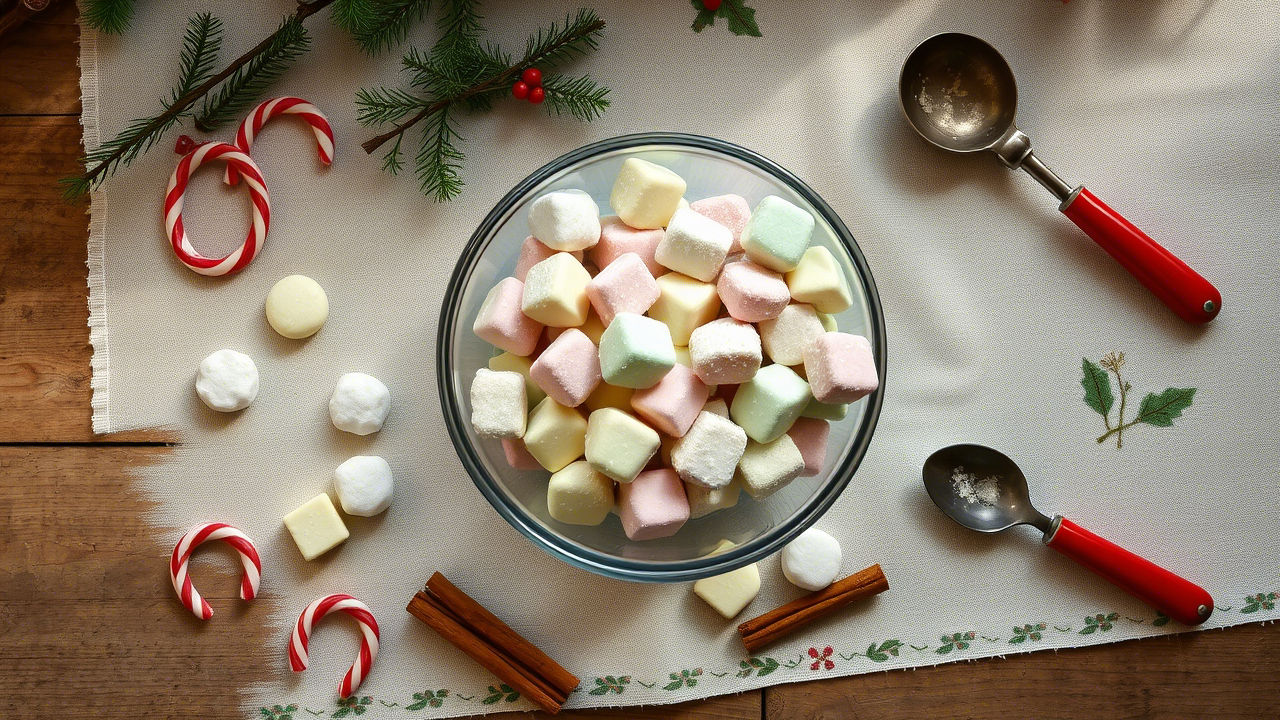There’s something quietly iconic about a bowl of soft butter mints sitting on your grandmother’s holiday table. You don’t reach for them. They reach for you. Little pastel pillows of meltaway sweetness, whispering peppermint and old-world charm. These aren’t just candies. They’re memory machines.
This article is not about the store-bought ones that taste like toothpaste in a sugar coat. We’re going deep on real old-fashioned butter mints—how they’re made, what makes them special, and why professionals still reach for this candy in a world of molecular gastronomy and edible glitter. This is the candy of church socials, Depression-era kitchens, and yes, the Christmases that still live in your bones.
So let’s unwrap it.
The Roots of the Soft Butter Mint
You’ve seen them in vintage tins, colored like Easter eggs even though it’s December. But their roots are humbler than you’d think.
Soft butter mints—also known as “wedding mints” or “cream cheese mints” in some parts of the U.S.—came into popularity around the 1930s. Sugar was more accessible post-WWI. Butter was back on the table. And housewives (yes, mostly women) were getting inventive with candies that could be made without expensive equipment.
The original butter mint was a simple emulsion. Butter, powdered sugar, peppermint extract, and a smidge of cream or milk. Sometimes a bit of cornstarch. That’s it. No boiling sugar stages. No thermometers. Just soft kneading and patient drying.
They became a holiday staple because they kept. Left out in a pretty bowl, they wouldn’t spoil. And they offered a touch of elegance—a cool-down after a rich ham or roast beef Christmas dinner.
What Makes a True Butter Mint?
Here’s where things get serious. Professionals in confectionery know: texture isn’t negotiable.
A proper butter mint shouldn’t snap or crack. It must yield. The outer layer slightly dry, maybe a tad crisp from air-drying. But inside? It melts. No chewing required. The fat from the butter emulsifies with the sugar to create this incredible creamy dissolve. You know the texture. Soft like fudge, but without the density.
The peppermint mustn’t punch. It should suggest. A whisper. Like a snowy breeze. Too much extract, and it veers toward medicinal. Or worse—like those nasty hard red-and-white mints at the bottom of a diner bowl.
Fat content is critical. Butter should be unsalted, high-fat European style if you can swing it. Plugrá or Kerrygold? Yes, please. U.S. domestic supermarket butter works in a pinch, but you’ll notice the difference in mouthfeel. It’s just… thinner.

The Process, Expert-Level
Let’s talk technique.
First, the butter. It must be room temp. Not microwaved. Not “softened” by sitting on a stove. Real ambient softness.
Cream the butter with sifted powdered sugar—always sift it. Clumps ruin the final texture. Ratios matter. It’s usually 1 part butter to 4 parts sugar by weight. Add a drop or two of peppermint extract (not oil unless you’re dosing with a toothpick—this stuff is potent). A splash of heavy cream, or even evaporated milk, brings the mixture together.
Then comes the kneading. Gloves help here—heat from your hands activates the butter. You’re not working gluten here, so it’s about incorporating and softening, not developing structure.
You can color the batch at this stage, or divide and conquer with a few drops of food coloring. Go light. These aren’t circus candies.
Shape? Professionals often pipe them for uniformity. Others roll ropes and slice into pillows. Dry on parchment overnight, uncovered. Some old recipes call for 24 to 48 hours of air-drying for the perfect crust. If you’re in a rush, you’re in the wrong candy business.
Scaling for Service and Storage
Here’s where most home recipes fail professionals: scale.
If you’re working for an event or commercial setting, batch consistency is key. You need humidity control (mints will absorb moisture and turn sticky in damp conditions), portion control, and shelf-life tracking.
Storage: airtight, room temp, in layered parchment. Avoid the fridge—it causes sugar bloom and weird texture shifts.
Butter mints can be made up to 2 weeks in advance if stored properly. After that, the flavor flattens and the texture goes too soft.
Tip from the field: Adding a touch of invert sugar or glucose can stabilize texture and prevent premature drying. Not traditional, but extremely effective at scale.
Why These Mints Still Matter in Professional Kitchens
In a world obsessed with novelty, butter mints have found new life not by changing, but by staying the same.
They’re often used now in upscale restaurants as mignardises—the final small bite after dessert. Just one tiny pastel cube. It cleanses. It comforts. It reminds you that food is memory.
Butter mints have also been popping up in nostalgic dessert menus. Crumbled over panna cotta. Folded into semifreddo. Infused in ganache. The base recipe is adaptable, stable, and simple enough to tweak without destroying.
They’re also cost-effective. For caterers, they’re gold. You can produce 300 pieces for under $5 in ingredients.
And people remember them. Nobody remembers a gummy bear. But a butter mint? That lingers.

Common Mistakes (and Why They Matter)
Too much peppermint: you’ve ruined it. Seriously. Start with 1/8 teaspoon and taste. It’s way easier to add than subtract.
Improper drying: if you cover them too soon, or stack them before they’re crusted over, you get sticky messes. These aren’t fridge candies. Patience is baked into the recipe.
Using margarine: please don’t. You lose the fatty roundness that defines the meltaway texture. Margarine contains water and stabilizers that mess with mouthfeel.
Over-kneading: yes, it’s a thing. If you knead too much, the mix gets greasy. The butter starts separating. Use cold hands or knead in short bursts.
Variations That Work (and Some That Don’t)
Lemon extract instead of peppermint? Works. Rosewater? Sometimes. Maple? Surprisingly delightful. But steer clear of oils like orange or clove unless you balance acidity—they overpower easily.
Some chefs experiment with adding powdered freeze-dried fruit. Raspberry powder gives a nice tang and pretty color. Beet powder is an old trick for pink mints without artificial dyes.
Chocolate-dipped butter mints? Not traditional, but the right dark chocolate shell gives it a cool textural contrast. Do it thin, though. Otherwise, you’re biting into fudge inside a brick.
Nutritional Data and Market Trends
From a nutritional standpoint, butter mints are pure sugar and fat. Each one is about 25–30 calories, zero fiber, zero protein. Not health food, obviously. But they’re not eaten in handfuls. You eat one. Maybe two. It’s a micro dessert.
According to market analysis (Statista, 2023), nostalgic candies have seen a 14% YoY increase in specialty food retail in North America. Butter mints, along with ribbon candy, are having a quiet resurgence—especially in small-batch and farm-to-table confectionery lines.
Google Trends also shows spikes in “homemade butter mints” and “Christmas mint candy” every November–December, peaking mid-December each year.
Final Thoughts and Takeaways
Old-fashioned butter mints aren’t just a recipe. They’re an edible archive. A record of texture, technique, and tradition that survived the industrial candy wave.
For professional chefs, they offer an opportunity to connect nostalgia with nuance. For caterers, they’re economical and memorable. For artisans, they provide a blank canvas with incredible textural potential.
And for everyone else? They’re Christmas. They’re grandma’s house. They’re that one candy that doesn’t shout, doesn’t sparkle, doesn’t need a brand name. They just sit there quietly being perfect.
If you’re going to make them—make them right. Respect the butter. Go light on the mint. And give them time to dry.
Because sometimes, the softest things are the ones that last longest.
2/2
FAQs
What are soft Christmas butter mints made of?
Butter, powdered sugar, peppermint extract, and a bit of cream or milk.
How do butter mints get their soft, melt-in-mouth texture?
The butter emulsifies with sugar, creating a creamy, soft consistency that melts easily.
Why is drying time important for butter mints?
It forms a light crust and prevents stickiness, enhancing texture and shelf life.
Can I use margarine instead of butter?
No, margarine alters texture and flavor negatively due to water and additives.
How much peppermint extract should I use?
Start with a tiny amount—about 1/8 teaspoon—to avoid overpowering flavor.
How should I store butter mints?
In an airtight container at room temperature, layered with parchment paper.
Can butter mints be made in large batches for catering?
Yes, but humidity control and texture stabilization (like adding invert sugar) are key.
Are there any popular variations of butter mints?
Lemon, rosewater, and freeze-dried raspberry powders are common subtle alternatives.
Do butter mints have a long shelf life?
They keep well for up to two weeks if properly stored and dried.
Why are butter mints still popular in professional kitchens?
They evoke nostalgia, offer elegant texture, and are cost-effective for events.

Mariana is a passionate home cook who creates delicious, easy-to-follow recipes for busy people. From energizing breakfasts to satisfying dinners and indulgent desserts, her dishes are designed to fuel both your body and hustle.
When she’s not in the kitchen, she’s exploring new flavors and dreaming up her next recipe to share with the Foodie Hustle community.

